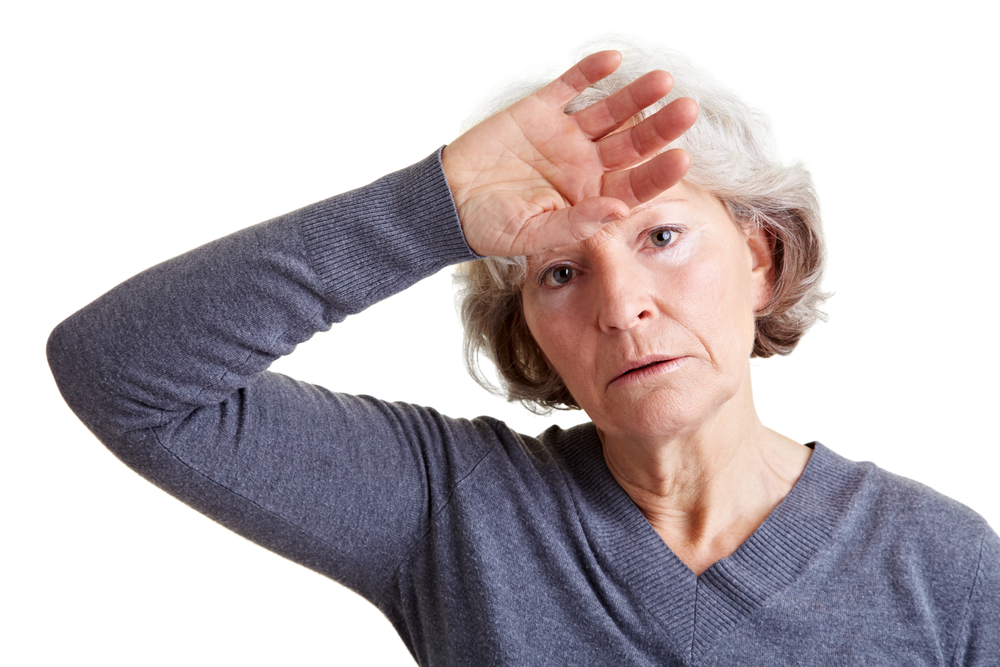What Do We Know About Hot Flashes in Menopause?
 It is 3 am, and while in bed, you are awakened by a sudden burst of heat in your face, neck, and arms that forces you, now drenched in sweat, to throw off the covers, only then to chill. With up to 75% of women experiencing this phenomenon during the menopause transition and 10% for a lifetime, what do we know about the biology of hot flashes?
It is 3 am, and while in bed, you are awakened by a sudden burst of heat in your face, neck, and arms that forces you, now drenched in sweat, to throw off the covers, only then to chill. With up to 75% of women experiencing this phenomenon during the menopause transition and 10% for a lifetime, what do we know about the biology of hot flashes?
Hot flashes are initiated by enhanced sympathetic activity within the brain in association with reduced ovarian estrogen production. Yet, the occurrence of hot flashes correlates poorly with measured levels of plasma, urinary or vaginal estrogen. Hot flashes, however, are linked to elevated baseline plasma levels of norepinephrine metabolites in symptomatic women, which increase further during a hot flash. Estrogen’s actions in the brain during ovulation to reduce the response of sympathetic receptors may explain why, during estrogen withdrawal, enhanced sympathetic activity occurs. But how does this explain the clinical picture of hot flashes?
Scientists have found that, during the reproductive years, a woman can adjust to a change in her environment of about 0 .4 degrees C without stimulating the hypothalamus, the thermoregulatory part of her brain. Entering a warm room, smoking a cigarette, or having spicy food; these events do not seem to stimulate a central sympathetic response. This is referred to as the “thermoneutral zone.” Yet, in the menopausal years, coincidental with a drop in estrogen levels, the thermoneutral zone disappears. This change has been reproduced in the animal model where administering norepinephrine into the blood stream also narrows the thermoneutral zone. Any small rise in temperature then triggers the hypothalamus into action with the goal to lower the body’s temperature. As a result, one’s heart rate increases to direct capillary blood flow to the skin and moisture is released through the sweat glands, both intended to reduce one’s body temperature. Then a brief drop in body temperature occurs, the chill factor.
Treatments using cognitive behavioral therapy, or mind-body interventions such as yoga, hypnosis, or acupuncture, effectively reduce one’s response to hot flashes but have little or no effect on frequency. Nonetheless these approaches have been shown to improve one’s response to stress, sleep disorders, and depression. Moreover, dietary modification and weight loss have been shown to reduce vasomotor symptoms.
Estrogen is the gold standard medication for treating hot flashes, usually reducing their incidence and severity. The effectiveness of other treatments must be judged against their placebo effect, the lessening of symptoms based on the woman’s expectation that the treatment will work. For those who cannot take systemic estrogens, treatment with clonidine; the Selective Serotonin Reuptake inhibitors (SSRIs) fluoxetine, paroxetine, or sertraline; or the anticonvulsant gabapentin, have all been reported to reduce hot flashes from 20% to 50% of women tested.
By James Woods, M.D.
Dr. Woods treats patients for menopause at the Hess/Woods Gynecology Practice.
Disclaimer: The information included on this site is for general educational purposes only. It is neither intended nor implied to be a substitute for or form of patient specific medical advice and cannot be used for clinical management of specific patients. Our responses to questions submitted are based solely on information provided by the submitting institution. No information has been obtained from any actual patient, and no physician‐patient relationship is intended or implied by our response. This site is for general information purposes only. Practitioners seeking guidance regarding the management of any actual patient should consult with another practitioner willing and able to provide patient specific advice. Our response should also not be relied upon for legal defense, and does not imply any agreement on our part to act in a legal defense capacity.
James Woods | 1/14/2015




